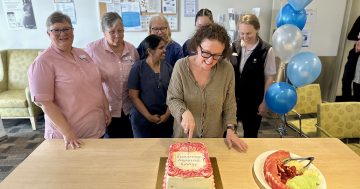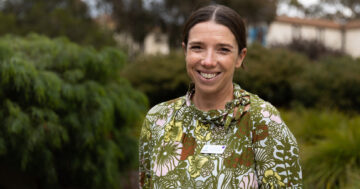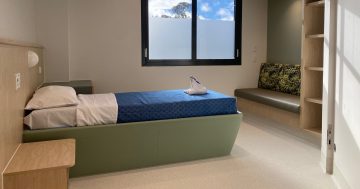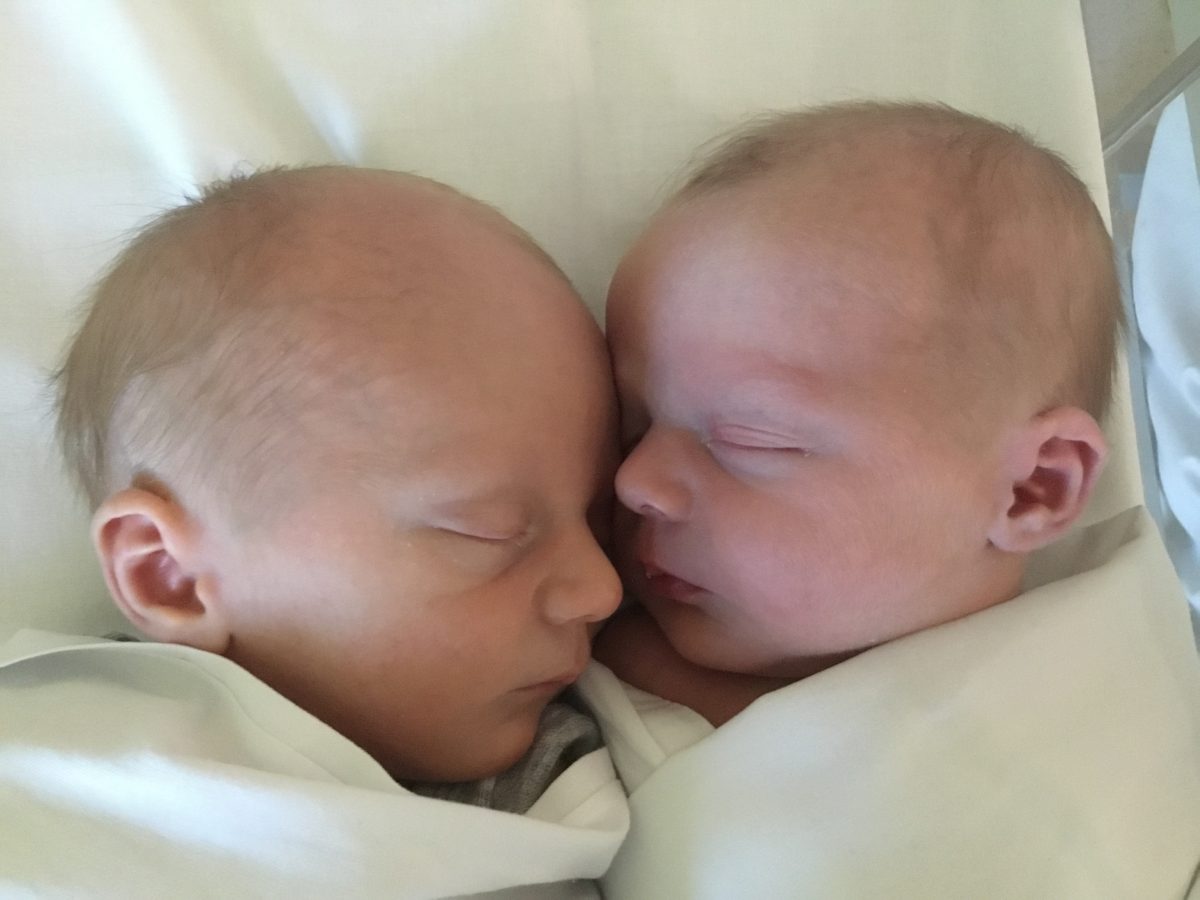
My son and daughter were born at Centenary Hospital during the pandemic, and I have no complaints about the care that they received. Photo: Supplied.
Being a journalist, I try my best to be objective and not let my experiences get in the way of telling a story fairly.
Which is why I had to take several deep breaths when reporting on the latest training accreditation report into Centenary Women’s and Children’s Hospital’s obstetric and gynaecology unit, which highlighted patients being exposed to “significant risks” due to a myriad of ongoing issues.
Before we dive in, some context: I had my twins in June 2020, when the health system was scrambling under the pressure of the COVID-19 pandemic. Given I was pregnant with twins and didn’t have private health cover, I couldn’t deliver at Queanbeyan Hospital (I live in NSW and they don’t take high risk pregnancies anyway). My address also meant I wasn’t eligible for Centenary’s CATCH program, where you get the same midwife for your entire pregnancy.
Still, I feel my concerns during my pregnancy were missed and dismissed.
What was the moment I lost faith that I was receiving the healthcare I had expected?
Was it when, for the third appointment in a row, my blood type was incorrectly quoted and I was told I would have to have an ‘anti-D injection‘ after birth? (Why this wasn’t changed on my record the first time I brought it up, I have no idea.)
Was it when I voiced my concerns that I had lost a lot of weight because of nausea and vomiting, and the midwife looked me up and down and said: ‘You look fine to me?’. (I made her weigh me and we discovered I had lost six kilos in my first trimester. She listened to me then.)
Was it when the doctor (who had a trainee in the room) asked if I had any questions and, when I pulled out my list, stood at the door with his hand on the knob rather than sitting back down and actually listening? (I stopped after question three because he clearly had better things to do.)
Was it when, two weeks before giving birth, I mentioned I had been having vision disturbances and really intense swelling in my feet and calves? The recently graduated midwife asked: ‘Is the swelling abnormal?’. When I replied: ‘I don’t know, it’s my first pregnancy, would you like to take a look?’, she gave me a cursory glance and said I looked okay. (I was wearing baggy tracksuit pants and socks).
Turns out I had signs of a rare form of pre-eclampsia called HELLP syndrome, which causes death in 25 per cent of cases – hindsight is 20/20.
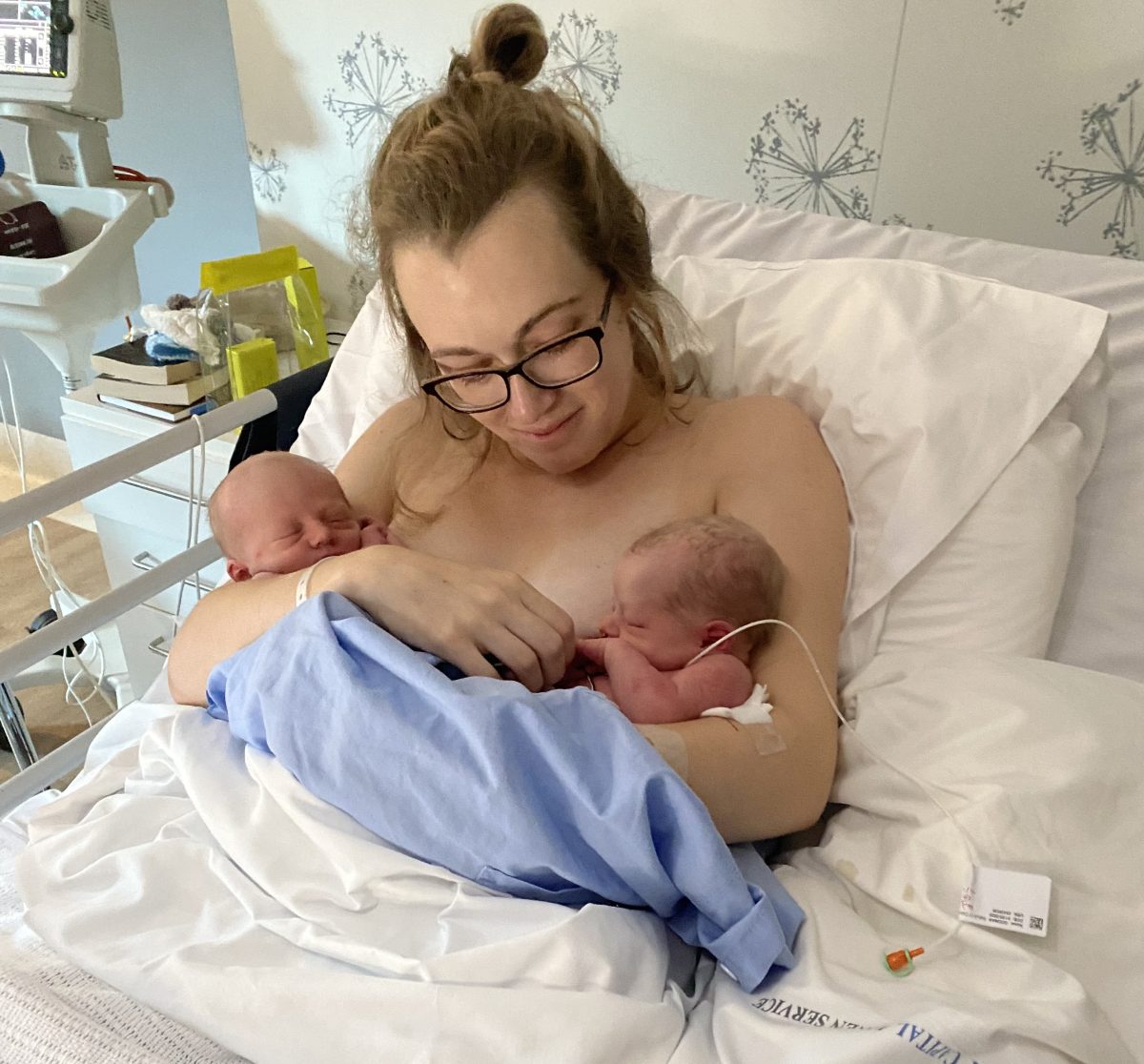
We stayed in hospital for a week – first in ICU then the postnatal recovery ward – while we tried to get my blood pressure under control after I experienced a rare complication related to pre-eclampsia. Photo: Supplied.
I was in labour for 21 hours (I couldn’t have an epidural because of my condition), and ended up having an emergency c-section under a general anaesthetic.
I had a panic attack on the delivery table as they prepped to cut me open and the wonderful surgeon held my face in her hands and put her forehead to mine, counting me down.
She later came to my room and apologised for not properly explaining how prepping for surgery works, and debriefed me on what happened. It was incredibly healing and I am appreciative for that.
A wonderful midwife also hugged my husband while we were in ICU (I was a lot sicker than I realised) and I love her for that as well.
But looking at that report, instances of trainees being encouraged to perform tasks outside of their scope and poor handover between shifts in the birthing suite, it sounded chillingly familiar.
My face went completely numb during labour (stroke is a big risk with HELLP) and the numbness persisted while we stayed in the hospital for an extra week until my blood pressure was under control.
I mentioned it to every nurse, doctor and midwife at every shift change and the response was always the same: a confused look along with the comment ‘that’s not in your paperwork’.
Was I just a problem being kicked down the road? Or was this poorly trained staff who were working dangerously long hours and who didn’t feel safe voicing concerns with superiors?
I know everyone’s experience is different, and some have wonderful things to say about giving birth at Centenary. But based on what I heard during my group therapy sessions at the Perinatal Wellbeing Centre in Canberra for my post-natal depression, there are a lot of mums who feel traumatised and let down by that hospital in particular.
Hopefully when the reviewers return to the unit in April they’ll see more improvements, especially as the hospital has hired more staff and are putting measures in place to better support junior medical officers.
Because I’m pregnant with my third – and I’m terrified of being transferred to Centenary if I have the same complications again.
If you’re an expectant or new parent experiencing mental distress, you can call the PANDA National Helpline on 1300 726 306.














